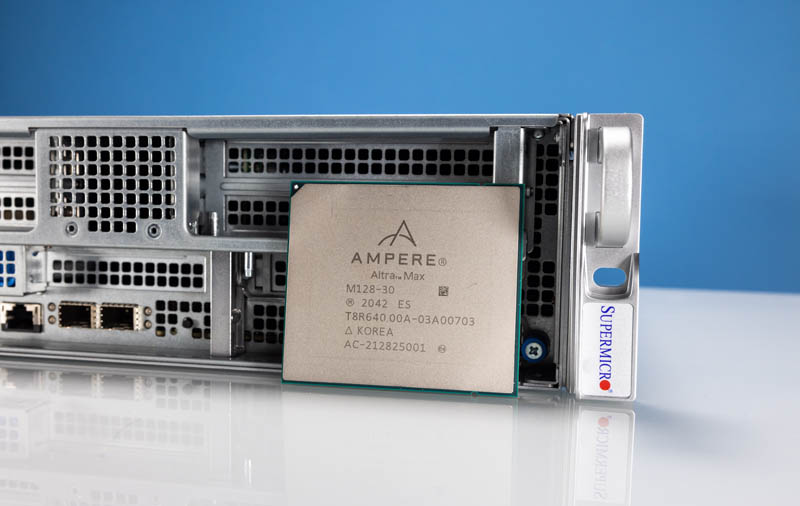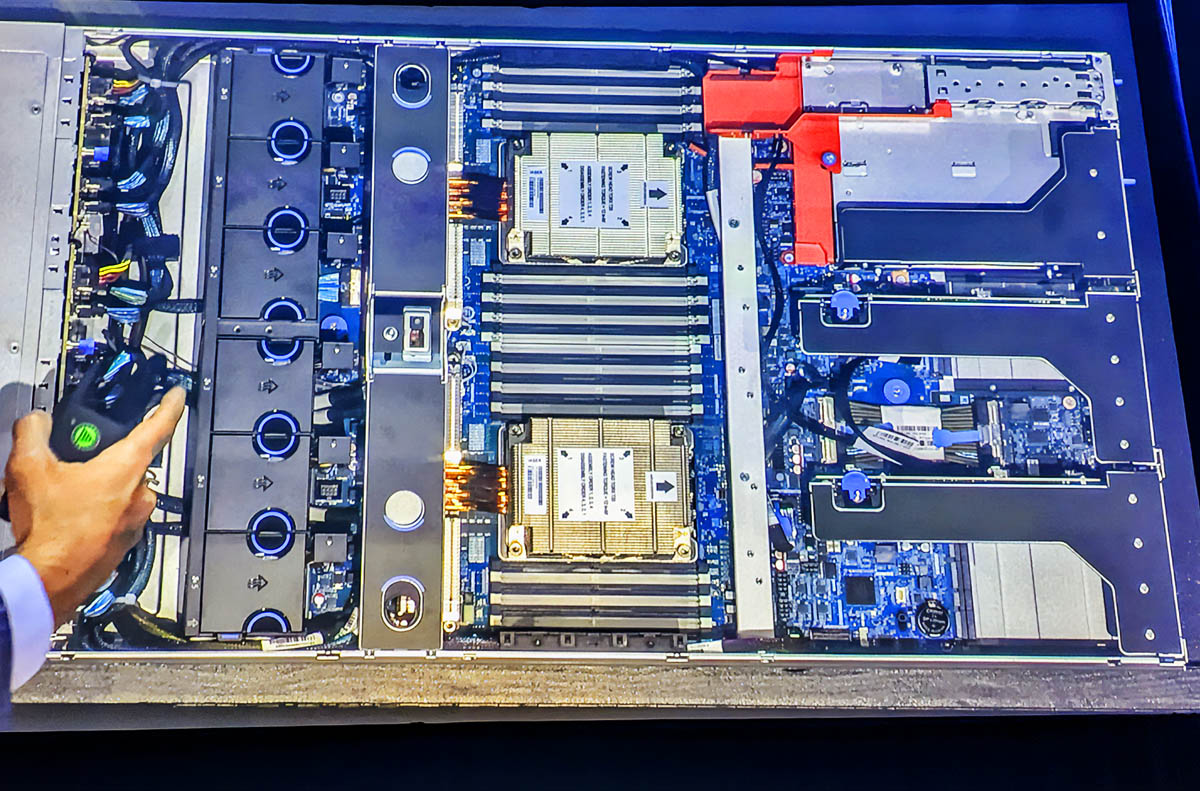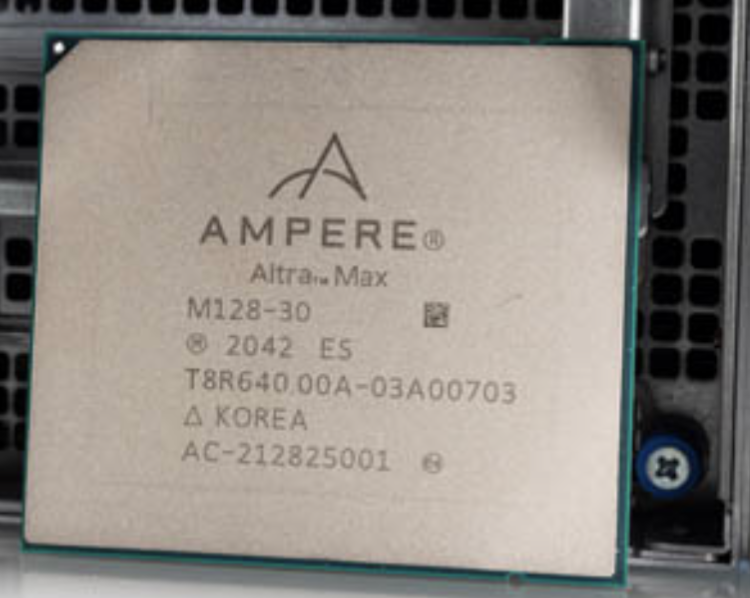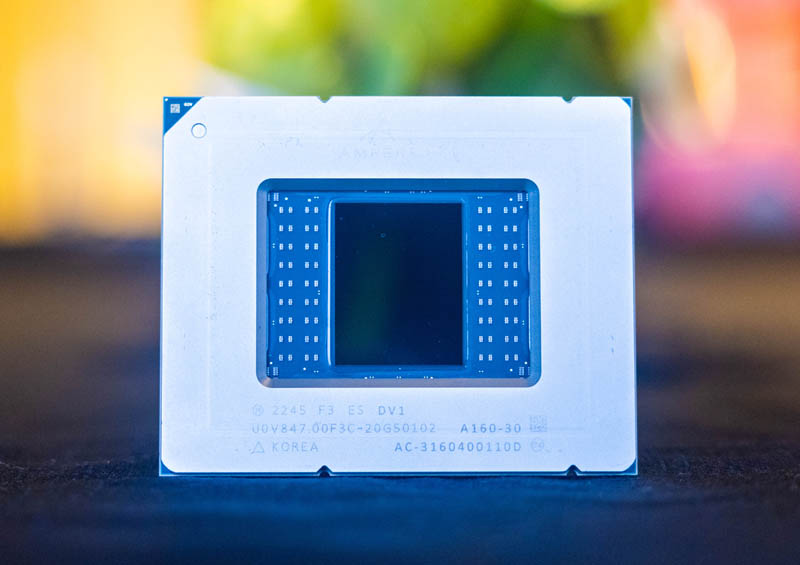erek
[H]F Junkie
- Joined
- Dec 19, 2005
- Messages
- 10,968
Nice looking chip and server chassis
"Ampere also told us they are not just chasing random IPC gains. Instead, it is getting workloads from its customers. It is emulating those workloads on its development cores, then it is picking the most efficient IPC gains to target in each generation.
Ampere’s design also has a sea of cores at the center, then memory and I/O in chiplets on the edge. One can think of Ampere’s design as almost like a reverse EPYC Rome, Milan, Genoa.
On the VM platform side, this is a fairly straightforward one. Since x86 uses SMT/ Hyper-Threading a cloud provider will generally only assign one VM to each core’s two threads (2 vCPU.) Since AmpereOne is a sea of cores with independent resources, it allows for 1 vCPU VMs. Then, Ampere has an architecture designed for a cloud-centric set of workloads versus x86’s larger cores. We will see AMD EPYC Bergamo later this quarter push x86 to 128 cores and we expect 256 threads with still the large high-performance cores but with lower cache per core. Intel will have Sierra Forest allegedly next year.
Overall, we are very excited about AmpereOne. The bigger question is how will the cloud service providers adopt it. Right now, many CSPs seem to be favoring an Altra core count closer to 64 cores, largely driven by AWS Graviton lines. If they can change to 128 or 192 core count chips, they will consolidate servers 3:1 over the initial barrage of Altra-based Arm servers, leading to lower costs.
After the Ampere AmpereOne launch, next will come AMD EPYC Bergamo’s launch. This is going to be a big space as there are a lot of web servers out there.
Now our goal is to find one, and we will find one within the next 14-18 days."


Source: https://www.servethehome.com/ampereone-with-192-cores-128x-pcie-gen5-lanes-and-ddr5-in-2023-arm/
"Ampere also told us they are not just chasing random IPC gains. Instead, it is getting workloads from its customers. It is emulating those workloads on its development cores, then it is picking the most efficient IPC gains to target in each generation.
Ampere’s design also has a sea of cores at the center, then memory and I/O in chiplets on the edge. One can think of Ampere’s design as almost like a reverse EPYC Rome, Milan, Genoa.
On the VM platform side, this is a fairly straightforward one. Since x86 uses SMT/ Hyper-Threading a cloud provider will generally only assign one VM to each core’s two threads (2 vCPU.) Since AmpereOne is a sea of cores with independent resources, it allows for 1 vCPU VMs. Then, Ampere has an architecture designed for a cloud-centric set of workloads versus x86’s larger cores. We will see AMD EPYC Bergamo later this quarter push x86 to 128 cores and we expect 256 threads with still the large high-performance cores but with lower cache per core. Intel will have Sierra Forest allegedly next year.
Overall, we are very excited about AmpereOne. The bigger question is how will the cloud service providers adopt it. Right now, many CSPs seem to be favoring an Altra core count closer to 64 cores, largely driven by AWS Graviton lines. If they can change to 128 or 192 core count chips, they will consolidate servers 3:1 over the initial barrage of Altra-based Arm servers, leading to lower costs.
After the Ampere AmpereOne launch, next will come AMD EPYC Bergamo’s launch. This is going to be a big space as there are a lot of web servers out there.
Now our goal is to find one, and we will find one within the next 14-18 days."


Source: https://www.servethehome.com/ampereone-with-192-cores-128x-pcie-gen5-lanes-and-ddr5-in-2023-arm/
![[H]ard|Forum](/styles/hardforum/xenforo/logo_dark.png)


